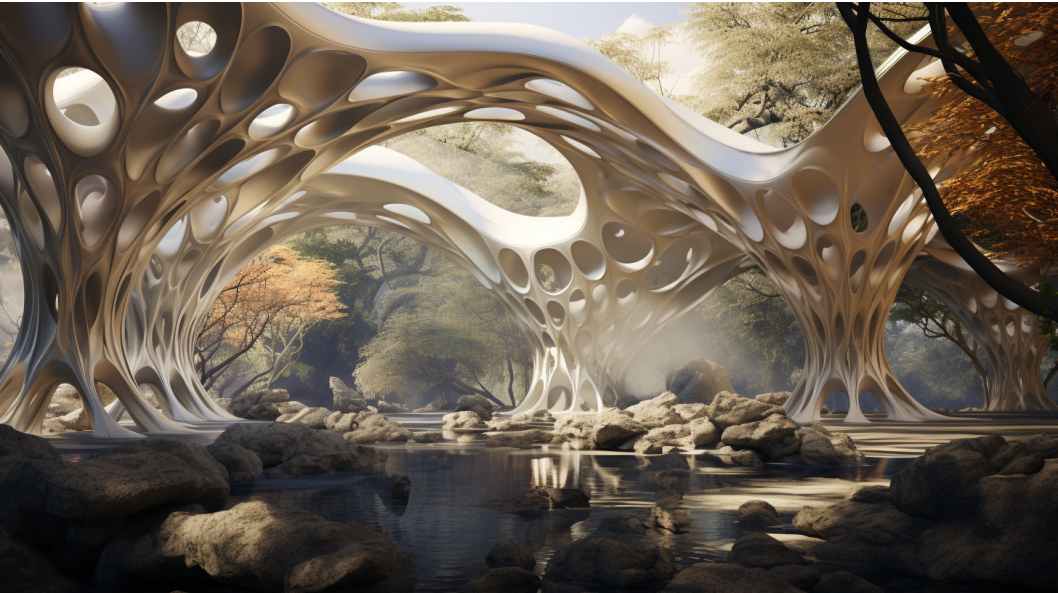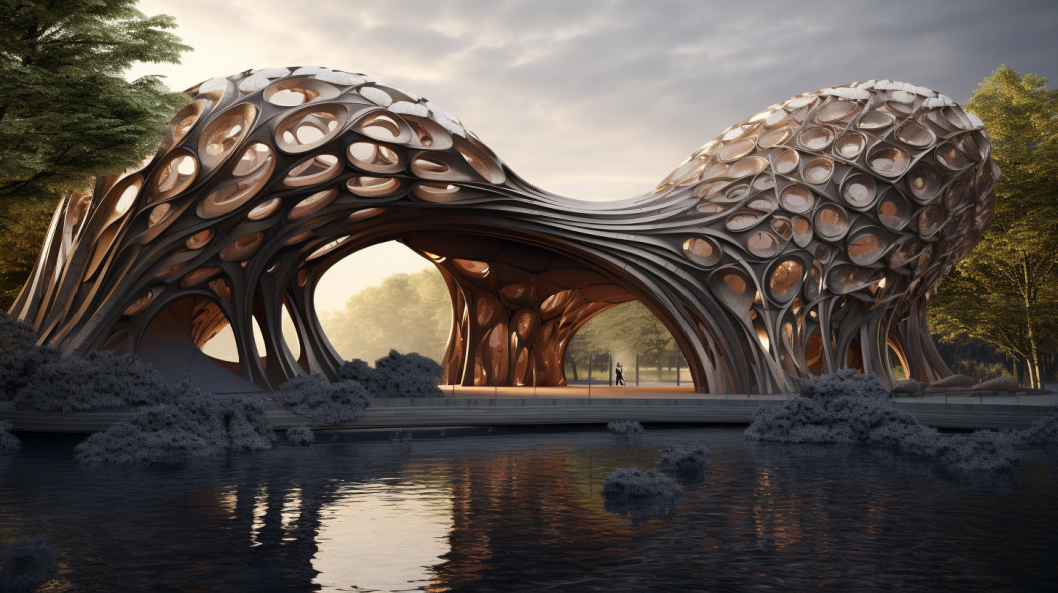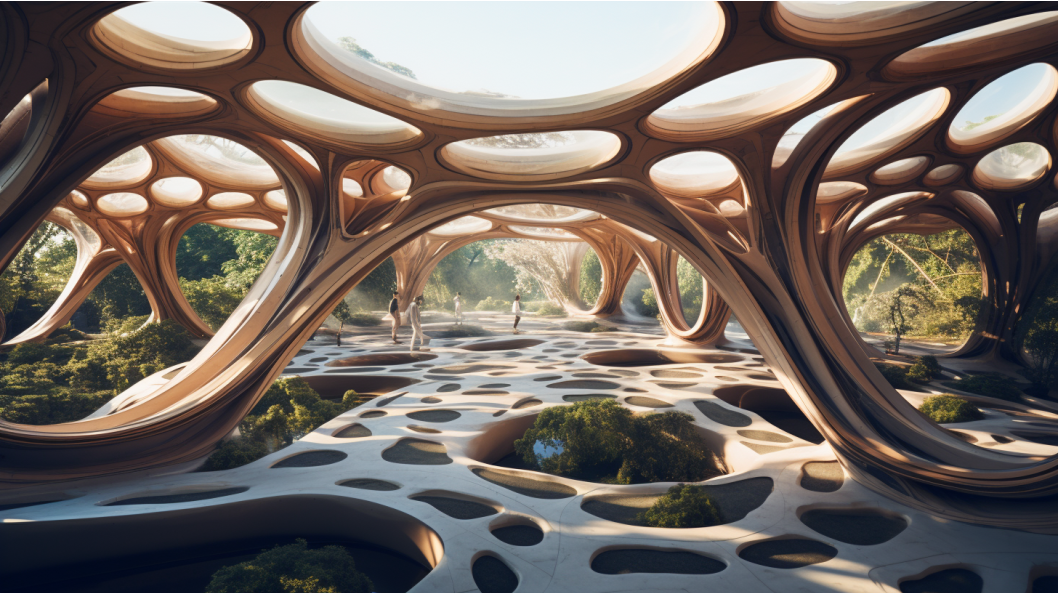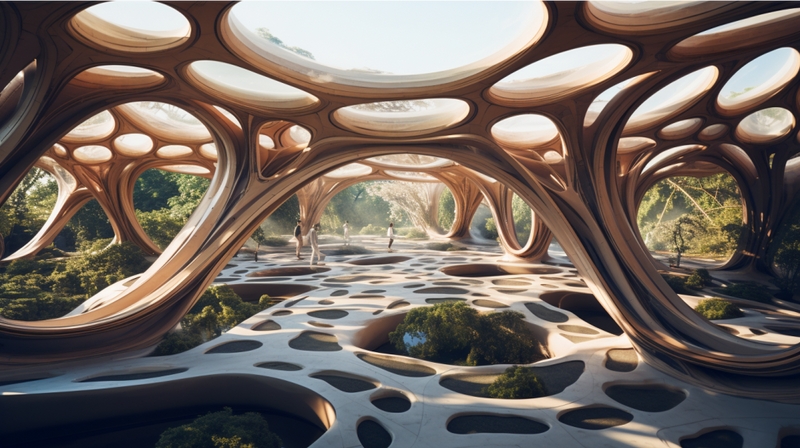Buildings in Balance: Creating Harmony Between Cities and Nature
In a world where growing cities constantly take over natural areas, the urgent need to protect our ecosystems has never been clearer. As cities expand, turning green landscapes into concrete jungles, we're heading towards environmental damage. But symbiotic structures, which smoothly blend built environments with natural ones, are leading the way in the bold journey towards sustainable development. Here, parametric design plays a key role, offering solutions that combine beauty, usefulness, and ecological benefits.
What Are Symbiotic Structures?
Symbiotic structures are built with the idea that buildings and nature should coexist. Unlike traditional buildings that often dominate the landscapes they're in, these constructions weave themselves into living, breathing ecosystems. They offer benefits to both people and the environment. The goal is to create spaces that respect, celebrate, and boost the life and strength of the natural world, while still meeting human needs for shelter, work, and fun.

Parametric Design: Making Things Work Together
Parametric design is at the forefront of architectural evolution. It offers dynamic solutions that blend usefulness and beauty with environmental awareness. Using computer programs (algorithms) and geometric calculations, designers create models where different settings can be changed to observe and improve various outcomes. This careful adjustment of elements allows architects and engineers to sculpt structures that not only react to but also improve the environments they're in.
Blending with Nature
An exciting area within parametric design involves creating structures that mimic natural forms and processes. This copying of natural phenomena, often called biomimicry, includes adapting things like temperature control from termite mounds or structural strength from honeycomb designs. The built-in algorithms in parametric design help recreate these nature-inspired forms, fostering a close blend between buildings and the surrounding natural world. This, in turn, minimizes disruption, promotes ecological balance, and creates a look that feels naturally connected to the local landscape.

Adaptive and Responsive
An important aspect of parametrically designed symbiotic structures is their natural ability to be adaptive and responsive to local environmental conditions. By adding sensors and flexible materials, buildings can react in real-time to changes in light, temperature, and wind patterns. This ensures optimal energy use and minimal environmental impact. This dynamic adaptability creates a physical and visual connection between the built form and its natural surroundings, weaving a tapestry where architecture and environment communicate continuously.
Eco-Friendly Cities
Cities are not just collections of human activity; they can also be important places for biodiversity and conservation when planned carefully. Parametric design gives urban planners and architects the tools to design buildings and infrastructures that include green spaces, urban farms, and wildlife corridors. This allows urban areas to support, rather than harm, local biodiversity. Intentionally including nature within urban settings creates a symbiotic relationship where cities provide homes for various species, while humans benefit from improved air quality, beautiful greenery, and better psychological well-being.

The Road Ahead: Building for a Sustainable Tomorrow
As we explore the possibilities of symbiotic structures through parametric design, a future where buildings work in harmony with, rather than against, natural environments starts to emerge. Ethical and eco-conscious architecture goes beyond just being a trend; it's becoming a fundamental principle upon which our future societies will be built.
Furthermore, as technological advancements, such as artificial intelligence and machine learning, continue to intertwine with architecture, the possibilities for creating even smarter, more adaptive, and truly symbiotic structures grow exponentially.
In a time where climate crises are significant and biodiversity is at risk, combining built and natural environments through symbiotic structures is not just a visionary goal but a clear necessity. Through the lens of parametric design, architects and designers are empowered to create a future where humanity and nature thrive together, forming a story where each sustains and enriches the other in a continuous dance of harmonious coexistence.
Ultimately, symbiotic structures help create a future where we, as guardians of our planet, actively contribute to a world where technology, architecture, and the environment come together. This cultivates a reality defined by balance, sustainability, and harmonious coexistence between the built and natural worlds. This shared purpose, supported by innovative approaches like parametric design, lights up a path forward that is not only sustainable but also deeply connected to the vital rhythms of the Earth and its many life forms.

Welcome to planksip® – your go-to media outlet for top-notch content creation. Get content like this for just $200 per week!
